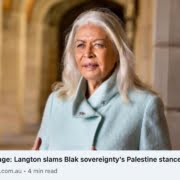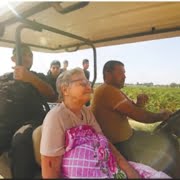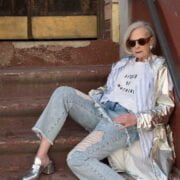The Power of the People
October 7th had a transformative impact on Israeli society. But it was probably not the impact that Hamas had intended when it launched its meticulously planned massacre of 1200 Israeli civilians and the taking of 240 hostages. A key element of the Hamas plan was the assault on Israeli women and girls. “The torture of women was weaponized to destroy communities, to destroy a people, to destroy a nation,” said Dr. Cochav Elkayam-Levy, the head of a nongovernmental commission investigating crimes of murder, rape, sexual atrocities, beheading and mutilation perpetrated by Hamas.
But instead of destroying a nation, it unleashed a dramatic upsurge in ‘the power of the people’ civic activism and an intensification of solidarity amongst Israelis.
In the immediate aftermath of the massacre, Israelis spoke out against the Government, the IDF and the intelligence agencies for abandoning them and not upholding their social contract to protect the people. They had failed to prevent the worst pogrom against Jews since the Holocaust. In the following weeks, the Government ministries seemed frozen and incapable of meeting the immediate challenges of the situation.
In the vacuum left by the Israeli Government, civic groups, local government and tens of thousands of volunteers sprang up around the nation to take on the basic functions normally conducted by the central government, particularly in war time.
Ironically, it was those whom Hamas had calculated to be fragmenting Israeli society who were actually amongst the most effective in strengthening its solidarity. For example, the Brothers and Sisters in Arms and the women’s movement Bonot Alternativa (Building an Alternative). They had been the main organisers of demonstrations of over 250,000 Israelis each week for the 10 months prior to the war against the Netanyahu Government’s attempts to undermine Israel’s judiciary and democracy.
After the Hamas massacre, these groups quickly pivoted and used their exceptional organisational skills and connections to set up the community services, supplies and support for Israelis whose lives and livelihoods were threatened and disrupted by the conflict. This included the hundreds of thousands of Israelis internally displaced from the northern and southern border regions under fire from Hamas and Hezbollah rockets and artillery. Civic groups even coalesced around soldiers in order to supply the logistics of the mobilisation.
#BRINGTHEMHOMENOW campaign
At same time, the survivors of October 7th and their families came together and forged themselves into a force to support each other and to campaign to free the hostages. They included Palestinian, Bedouin and Druze Israelis who had family members killed, taken hostage or both.
The surge in public support for these families grew into a phenomenon of ‘the power of the people’. This became evident in their ability to change the priorities of the Israeli Government. Following the Hamas assault, the Government had announced that it had two objectives in its counter-attack in Gaza: First, to remove Hamas as a military and political force from Gaza; Second, to return the hostages. In that order.
But the relatives of the hostages knew very well, that the Government’s priorities could leave their family members captive interminably. And given that 18 of the hostages were aged over 65, and 22 under the age of 18, without access to medication, they might not survive. So the families launched the #BRINGTHEMHOMENOW campaign to reverse the order of the Israeli Government’s priorities.
However, the deeply unpopular Netanyahu Government was not listening to them. It was preoccupied with its own survival.
So the families of the hostages tirelessly and heroically campaigned in Israel and around the world to raise awareness of the hostages. They set up ‘Hostage Square’ in central Tel Aviv as the focus of the #BringThem HomeNow campaign, held countless press appearances and rallied Israelis in long marches. Their campaign engaged the empathy and respect of most Israelis. Remarkably, the mounting public pressure forced Netanyahu to finally agree to meet with them and to announce that returning the hostages would now become the Government’s first priority.
During the seven day truce, 110 Israeli hostages were released. However 17 women and children and 119 men remain in captivity. The truce agreement stipulated that all women and children would be freed first. Hamas denied that it was still holding civilian women and children hostage, despite the evidence, and refused to release them. When Israel insisted on their release, Hamas responded by firing missiles from Gaza thereby ending the truce. President Joe Biden blamed Hamas’ refusal to release civilian female hostages for the end of the temporary cease-fire.
The end of the truce is a terrible blow to the families of the 136 hostages still being held by Hamas. But even those who have had their family members freed have nevertheless publicly committed themselves to continuing to pressure the Government to keep the release of hostages as its foremost priority.
- Translation of the text in Hebrew in image above: Press Conference of the Families of the Hostages on Day 59 of the War. ” Time has run out for the hostages – they have no time left, no food and no air.”











